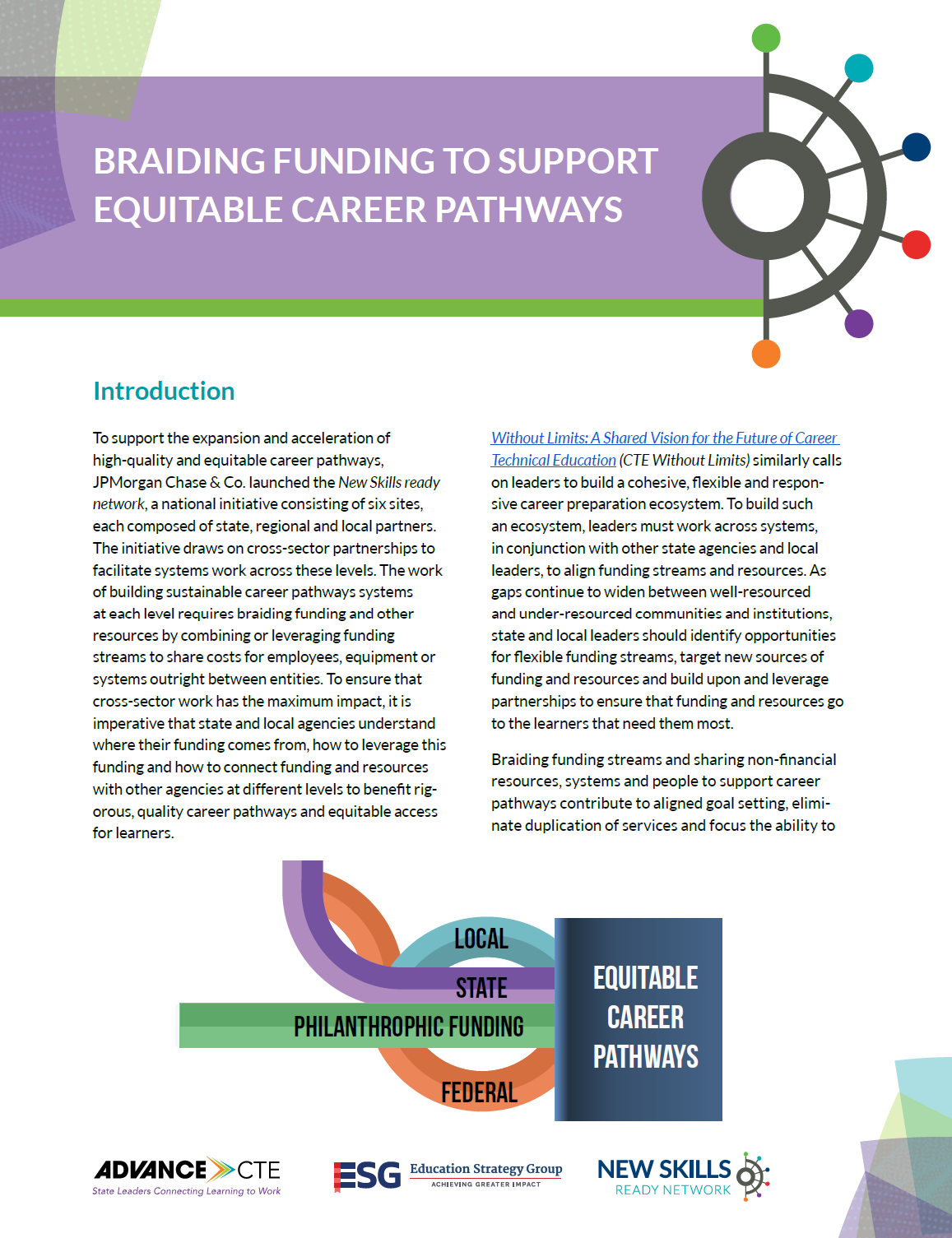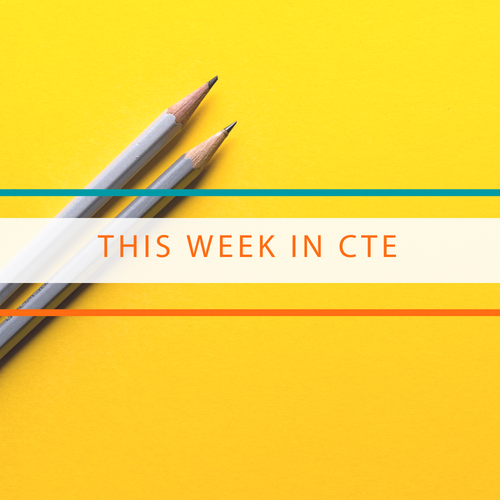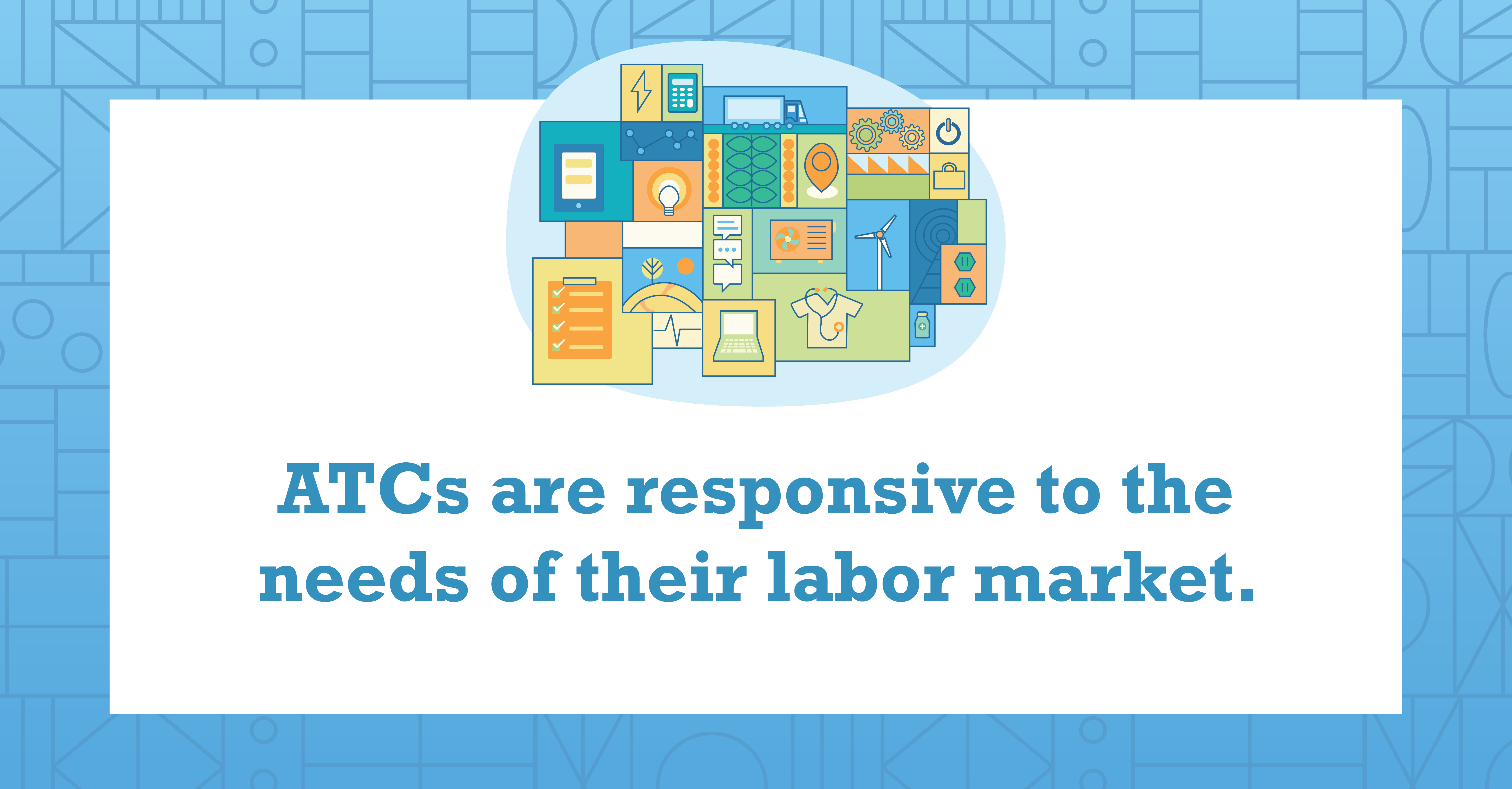![]() On March 30th, the Government Accountability Office (GAO) released a report reviewing Career Technical Education (CTE) programs funded by the Strengthening Career and Technical Education for the 21st Century Act (Perkins V). Following a congressional authorization of $1.3 billion for Perkins V in fiscal year 2021, GAO conducted a series of interviews with state education officials and representatives from CTE program providers in Delaware, Georgia, Ohio and Washington, as well as additional CTE stakeholders including business representatives, in order to study service and funding strategies and challenges.
On March 30th, the Government Accountability Office (GAO) released a report reviewing Career Technical Education (CTE) programs funded by the Strengthening Career and Technical Education for the 21st Century Act (Perkins V). Following a congressional authorization of $1.3 billion for Perkins V in fiscal year 2021, GAO conducted a series of interviews with state education officials and representatives from CTE program providers in Delaware, Georgia, Ohio and Washington, as well as additional CTE stakeholders including business representatives, in order to study service and funding strategies and challenges.
According to the study, state officials, program providers and stakeholders reported a variety of strategies to support different learner populations in CTE:
- Leveraging state, local and non-Perkins federal funding. To address learner needs in CTE programming, many respondents braided diverse funding sources, including state and local revenue streams, federal grants and philanthropic donations. Program providers at the secondary level were most likely to take advantage of Student Support and Academic Enrichment Grants and Supporting Effective Instruction State Grants, while providers at the postsecondary level frequently reported using Adult Education State Grants.
- Conducting needs assessments. States and providers also utilized the comprehensive local needs assessment (CLNA) process to identify learner needs and tailor CTE programs accordingly. Ohio created “equity labs” to provide resources for school districts to analyze CLNA data, which led to the discovery of English Learner underrepresentation in CTE and the subsequent hiring of an interpreter to make program information more accessible for this population.
- Creating meaningful partnerships with business and industry. Both state officials and stakeholders illuminated the importance of engaging with industry in order to develop relevant career pathways and offer work-based learning opportunities.
- Seeking support from state and local leadership. Stakeholders emphasized that buy-in from leaders such as governors and superintendents is often a key component for expanding and improving CTE programs. A program provider in Georgia reported that the district superintendent’s support ultimately allowed the county to transition from traditional public schools to career academies in order to promote higher graduation rates and greater student engagement.
Despite these successes, however, respondents highlighted challenges related to the delivery of CTE programs, the replication of effective models and program accessibility for learners.
Challenges for program delivery revolved around limited funding and capacity, troubles with attracting and retaining racially diverse CTE educators, and negative perceptions of CTE programs, largely due to a lack of shared knowledge on program purposes and outcomes. The report highlighted outreach activities such as reaching out to school counselors as beneficial for raising awareness of the benefits of CTE, as well as the creation of Grow-Your-Own (GYO) teacher programs to recruit underrepresented educators from the community.
State leaders and program providers also reported that it can be a struggle to replicate effective models due to insufficient data on long-term outcomes, as well as a lack of information on evidence-based strategies. These limitations, combined with funding constraints, make it hard to scale successful programs such as Washington’s I-BEST model, which provides additional support services and a team-teaching model that requires hiring two teachers per course. The state of Delaware is attempting to address data limitations by developing a postsecondary data system that connects different sources of information in order to develop a better understanding of learner needs and outcomes.
Additionally, learners experienced two major challenges in accessing high-quality CTE. First, many learners are unable to participate in work-based learning opportunities, often due to a lack of communication between schools and employers, as well as transportation barriers that make it difficult to travel to work sites. The GAO report suggests business and industry engagement as a key strategy to address these issues. Second, learners may lack support services they need to succeed, including language accommodations, child care, flexible scheduling and financial aid. Tests are a barrier to entry for many learners, and accessing financial assistance for postsecondary non-degree programs can also be difficult. The report emphasized efforts to hire translators and provide flexible online instruction as possible methods for making CTE more supportive and accessible for learner populations.
With the shared commitment to Without Limits: A Shared Vision for the Future of Career Technical Education (CTE Without Limits) and a continual effort to meaningfully collaborate across workforce and education systems, state CTE leaders can create innovative approaches to program outreach to build support for CTE programs among diverse constituencies, as well as advocate for expanded investment in additional services and supports that allow each learner to reach career success.
Allie Pearce, Graduate Fellow


 This is the third blog in a series published in partnership with New America through the
This is the third blog in a series published in partnership with New America through the  State education agencies, legislators and educators faced significant challenges from
State education agencies, legislators and educators faced significant challenges from  In support of this effort, Advance CTE recently published
In support of this effort, Advance CTE recently published  On October 27 and 28, over 270 state Career Technical Education (CTE) leaders gathered for Advance CTE’s 2021 Fall Meeting. Through timely plenary discussions, breakout and networking sessions, members and supporters were able to reflect on the transformations of the COVID-19 (coronavirus) pandemic, gain knowledge on the latest research and promising practices in states, and create community by building networks with leaders in similar roles.
On October 27 and 28, over 270 state Career Technical Education (CTE) leaders gathered for Advance CTE’s 2021 Fall Meeting. Through timely plenary discussions, breakout and networking sessions, members and supporters were able to reflect on the transformations of the COVID-19 (coronavirus) pandemic, gain knowledge on the latest research and promising practices in states, and create community by building networks with leaders in similar roles.  Developed with input from nearly 200 national, state and local education and workforce development leaders and supported by 40 national organizations,
Developed with input from nearly 200 national, state and local education and workforce development leaders and supported by 40 national organizations,  The transformative workforce changes resulting from the COVID-19 (coronavirus) pandemic have made it more urgent than ever for states to have a comprehensive strategy for reskilling and upskilling that unites stakeholders across education, workforce development and economic development. Advance CTE has been
The transformative workforce changes resulting from the COVID-19 (coronavirus) pandemic have made it more urgent than ever for states to have a comprehensive strategy for reskilling and upskilling that unites stakeholders across education, workforce development and economic development. Advance CTE has been  On the state and federal level, COVID-19 (coronavirus) fundamentally changed the conversation about education, significantly disrupting and refocusing state legislatures. Despite this, Career Technical Education (CTE) adapted to the challenges brought about by the coronavirus, continuing to deliver high-quality programming nationwide across all learner levels despite significant disruptions to education delivery. Because the pandemic was on the forefront of federal, state and local governments’ agendas, fewer policies and budget provisions for CTE were enacted than in previous years; in calendar year 2020, 31 states enacted or passed 67 policy actions related to CTE and career readiness.
On the state and federal level, COVID-19 (coronavirus) fundamentally changed the conversation about education, significantly disrupting and refocusing state legislatures. Despite this, Career Technical Education (CTE) adapted to the challenges brought about by the coronavirus, continuing to deliver high-quality programming nationwide across all learner levels despite significant disruptions to education delivery. Because the pandemic was on the forefront of federal, state and local governments’ agendas, fewer policies and budget provisions for CTE were enacted than in previous years; in calendar year 2020, 31 states enacted or passed 67 policy actions related to CTE and career readiness.